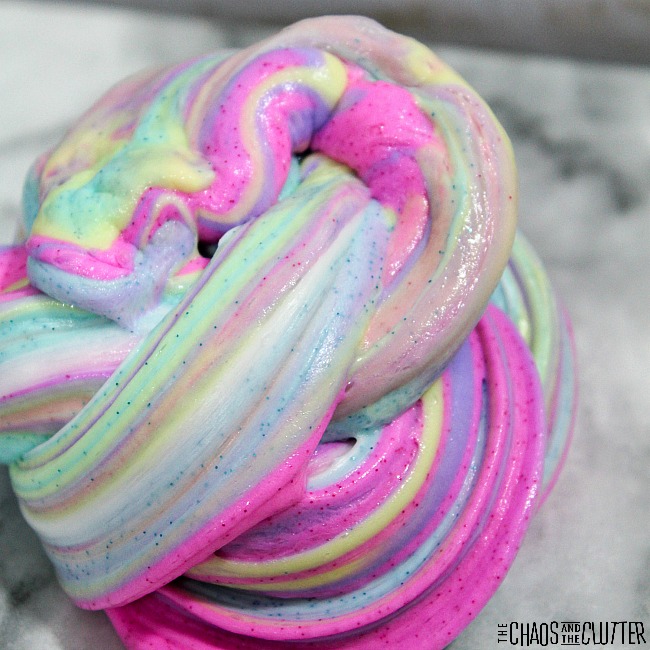Give your little one a chance to have some fun as they learn with these cute 5 Little Ducts activities. Make your own duck-filled sensory bottle for your kids to play with as they enjoy the book. They’ll have fun using their different senses to play along as you read a sweet nursery rhyme book.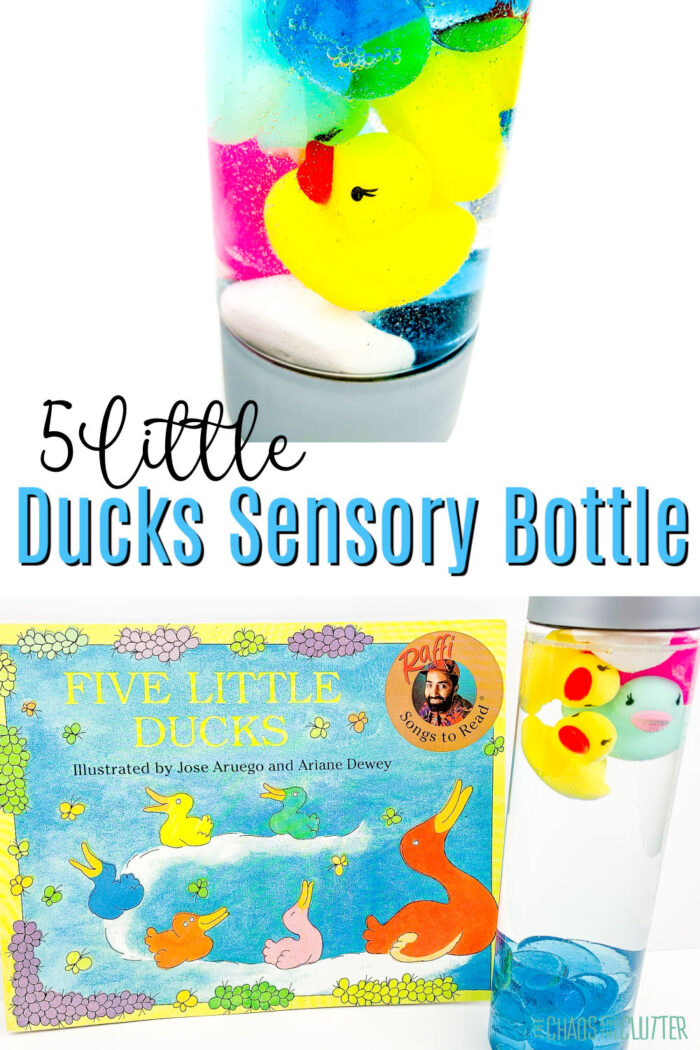
5 Little Ducks Sensory Bottle:
Supplies needed:
- 16 ounce sensory bottle
- 5 ounce bottle of Elmer’s Clear Glue
- 5 small rubber duck toys
- Blue glass stones/gems
- Water
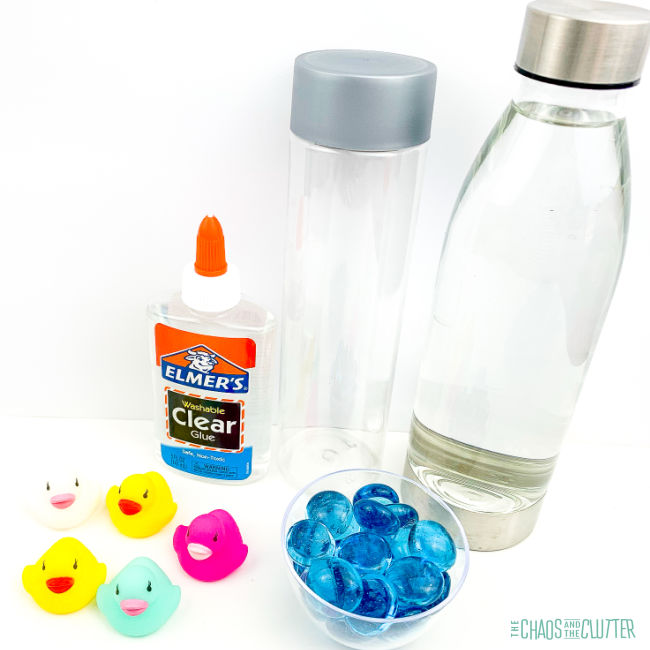
Instructions:
- Open the sensory bottle. Pour the whole bottle of glue into the bottle.
- Add the glass stones and gems to the bottom of the bottle, then place the ducks inside.
- Fill the bottle with water, leaving a little room at the top empty.
- Close the lid. Secure the lid with tape or glue, if desired, to ensure the bottle doesn’t leak.
- Shake the contents of the bottle until all the glue, gems, and ducks move around freely.
Note: You may have bubbles appear shaking the bottle for the first time. Allow the bubbles to settle and disappear after shaking.
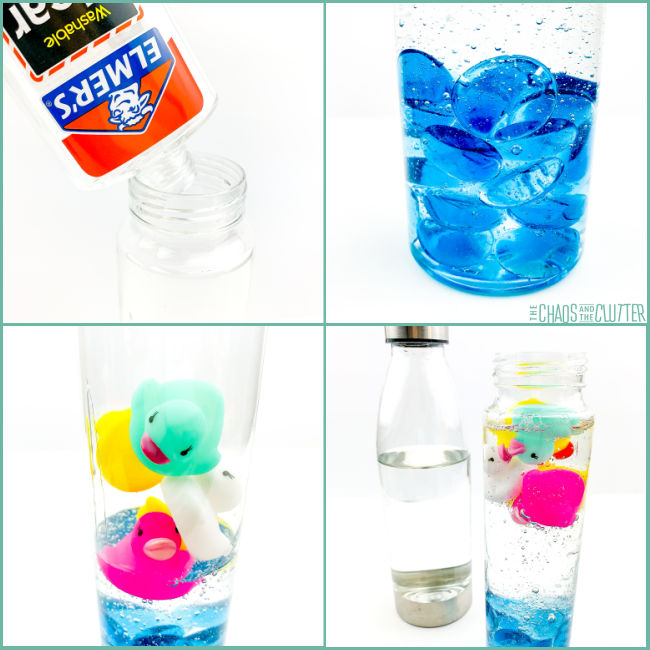
5 Little Ducks Preschool Activities
This cute duck craft is the perfect way to have some fun as you read! That’s because this sensory bottle goes along with the story in the popular children’s book, 5 Little Ducks.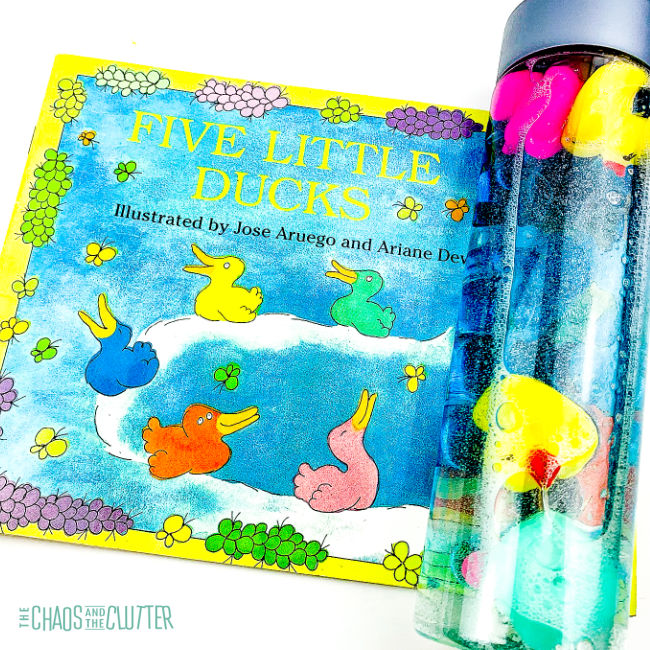
In the book, a mother duck patiently awaits Spring, when her five baby ducks – all grown up – return with their new families. Throughout the story, your preschooler will have the chance to practice counting and color recognition, making it a great way to reinforce the concepts they’re learning in school.
Read the book aloud to your kids or watch this YouTube read-along.
And after you finish reading the story, you can continue the learning process as your little ones make and play with their own sensory bottle. Once the bottle is put together, they can:
- Count the ducks in the bottle as they are reading, moving the bottle around.
- Match the colors in the bottle to the colors in the book.
- Watch the gems sink to the bottom while the ducks float to the top.
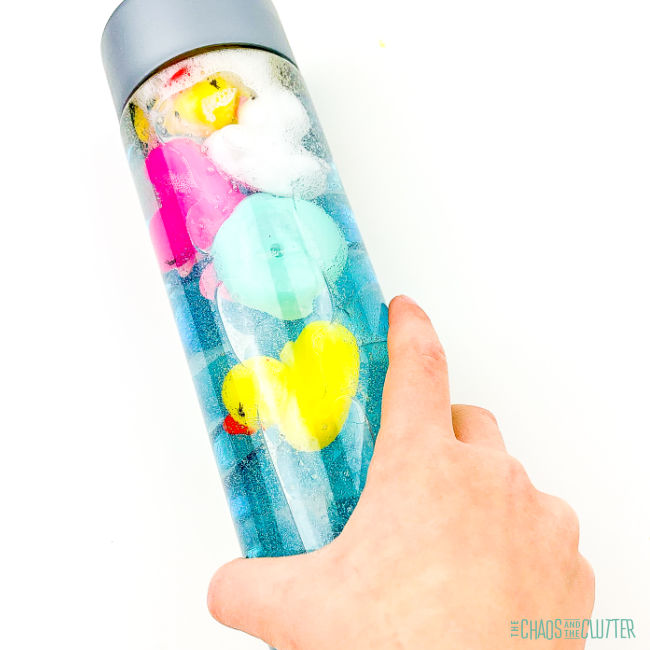
Other Activities to Correspond with the 5 Little Ducks Book and Song:
- 5 Little Ducks Storytelling Sensory Tub
- 5 Little Ducks Math Activities
- Printable Preschool Number Line for 5 Little Ducks
- 5 Little Ducks Printable Pack
- 5 Little Ducks Activities for Kindergarten
- Felt Board for 5 Little Ducks Learning and Play
- 5 Little Ducks Fingerplay
- Count and Circle 5 Little Ducks Craft
- Hands on Fun with the 5 Little Ducklings
- 5 Little Ducks Nursery Rhyme Rocks
- Printable Duck Puppets and Song
You may be interested in these other book related kids activities:
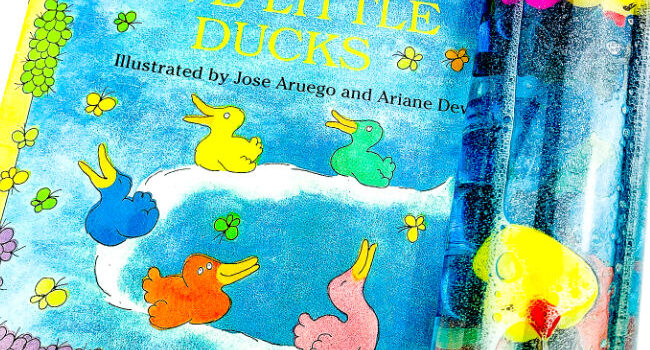
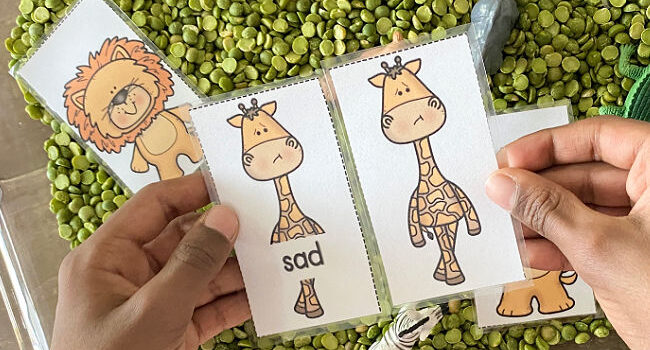
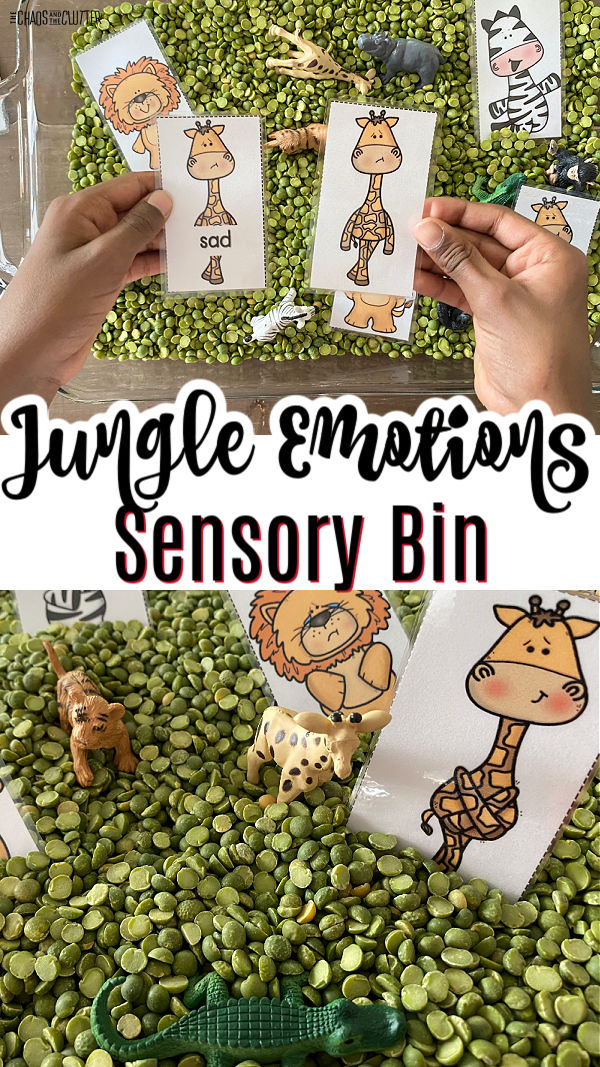 This activity is great for preschools, Kindergarten classrooms, or home. You can easily adapt the questions you ask for older and younger kids. Learning opportunities:
This activity is great for preschools, Kindergarten classrooms, or home. You can easily adapt the questions you ask for older and younger kids. Learning opportunities: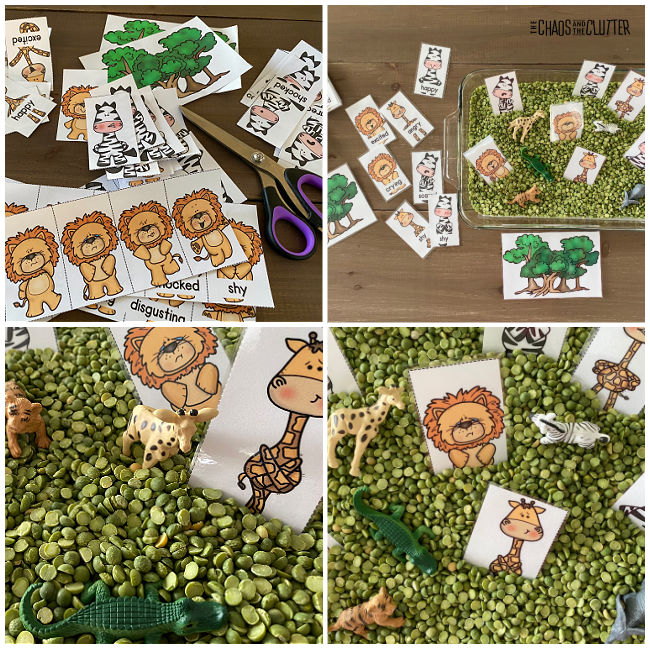
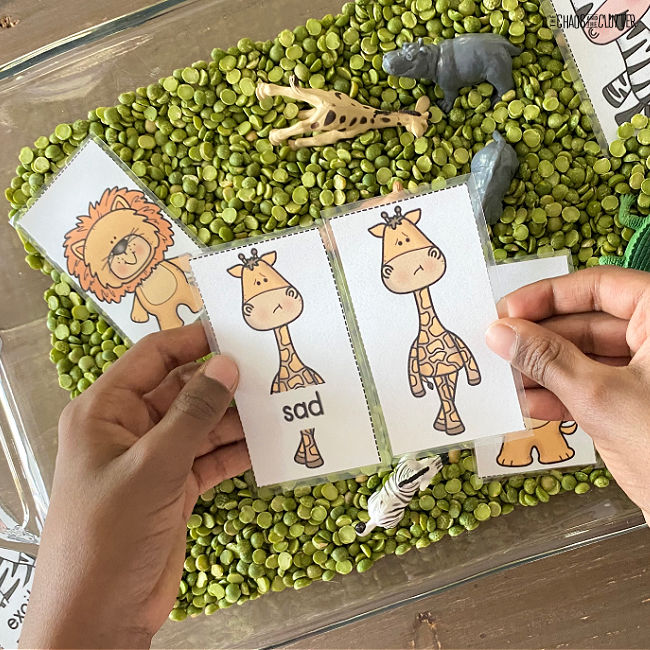

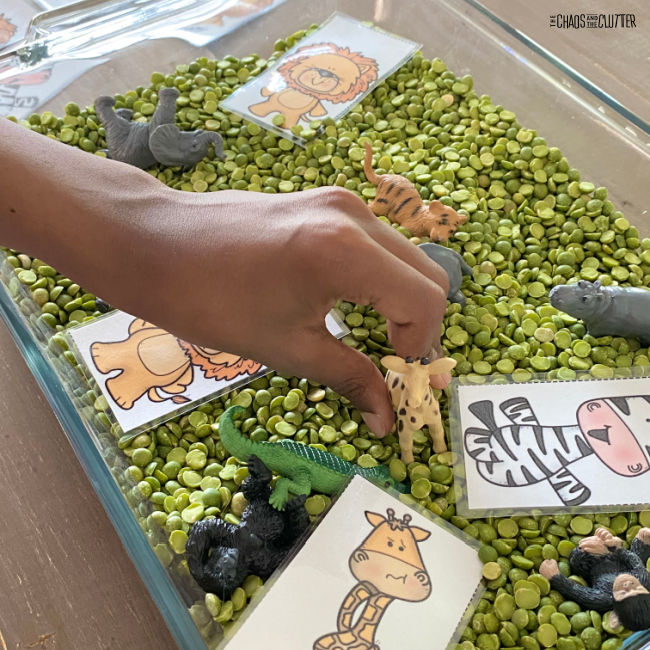
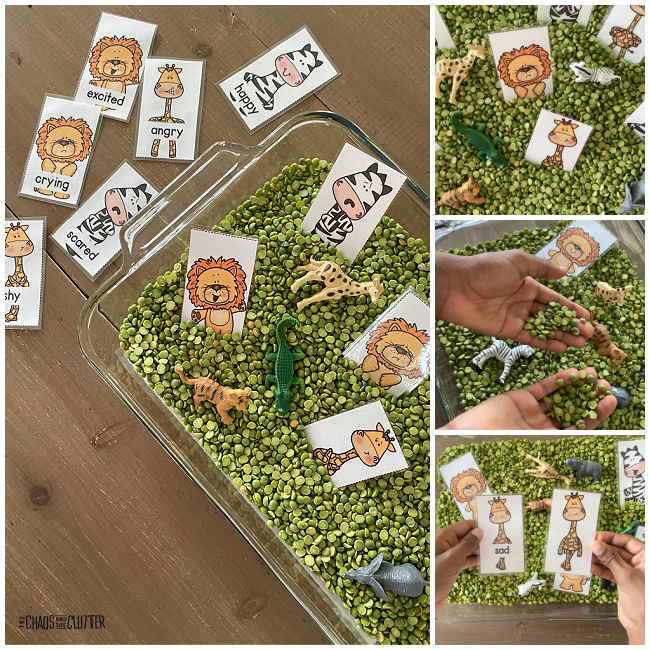
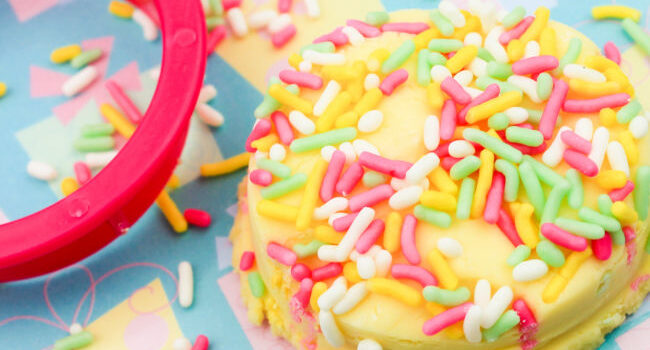
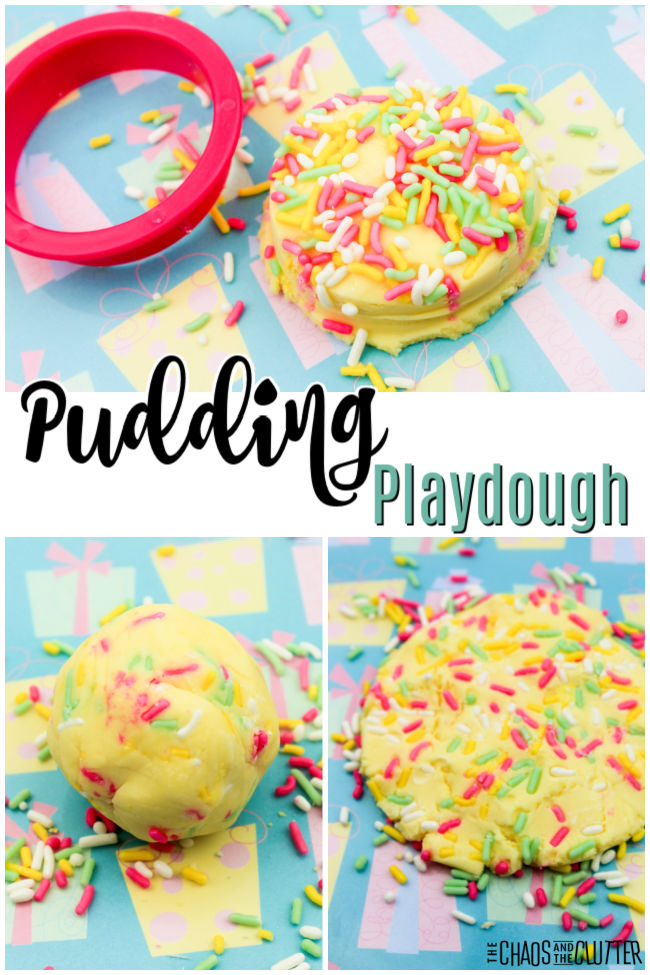 Kids can mould and shape to their heart’s content. It’s such a fun activity.
Kids can mould and shape to their heart’s content. It’s such a fun activity.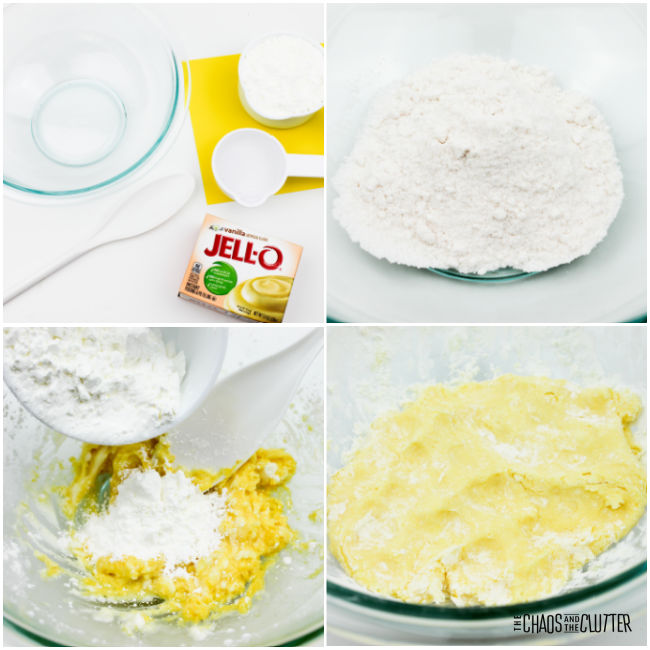
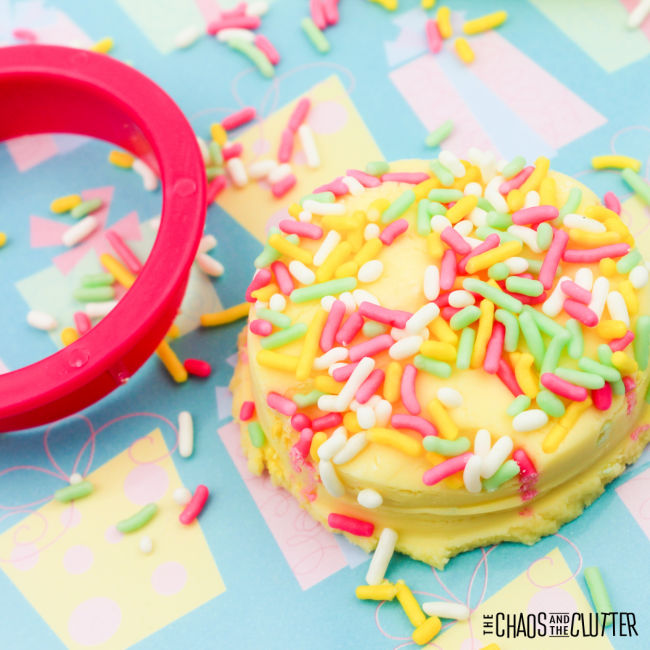
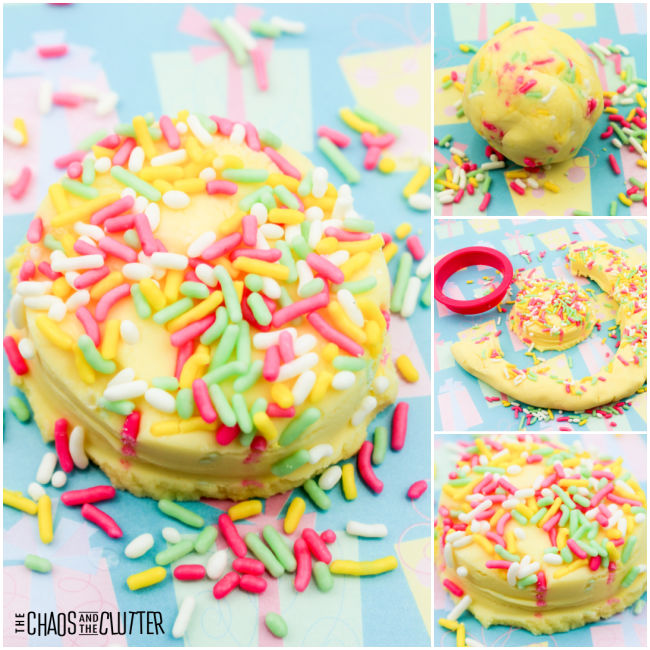 The ingredients are ones that you may already have in your pantry which is another benefit to choosing to make this edible pudding play dough.
The ingredients are ones that you may already have in your pantry which is another benefit to choosing to make this edible pudding play dough.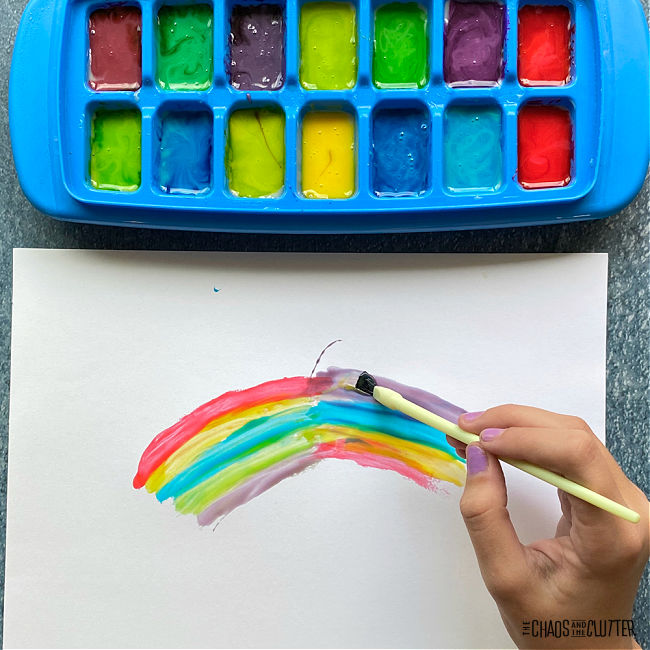
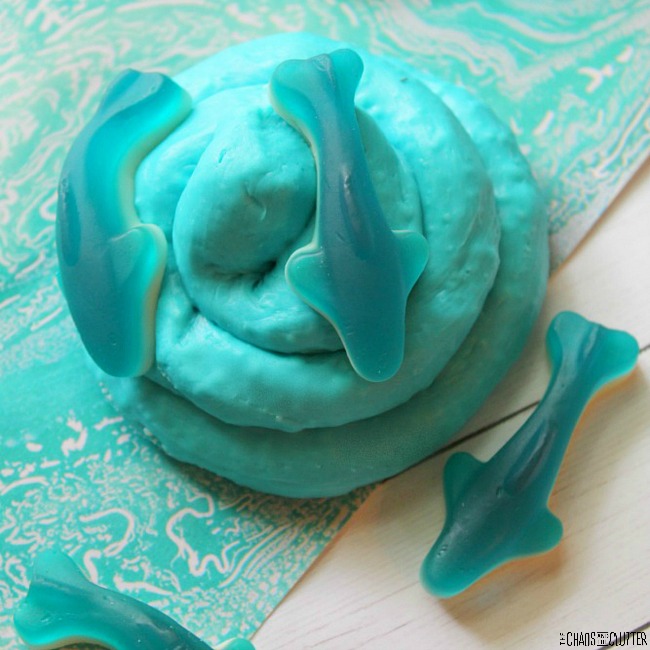
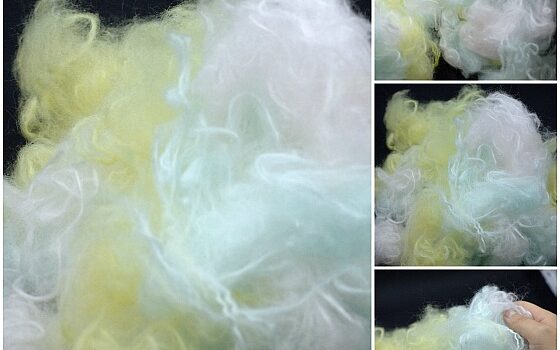
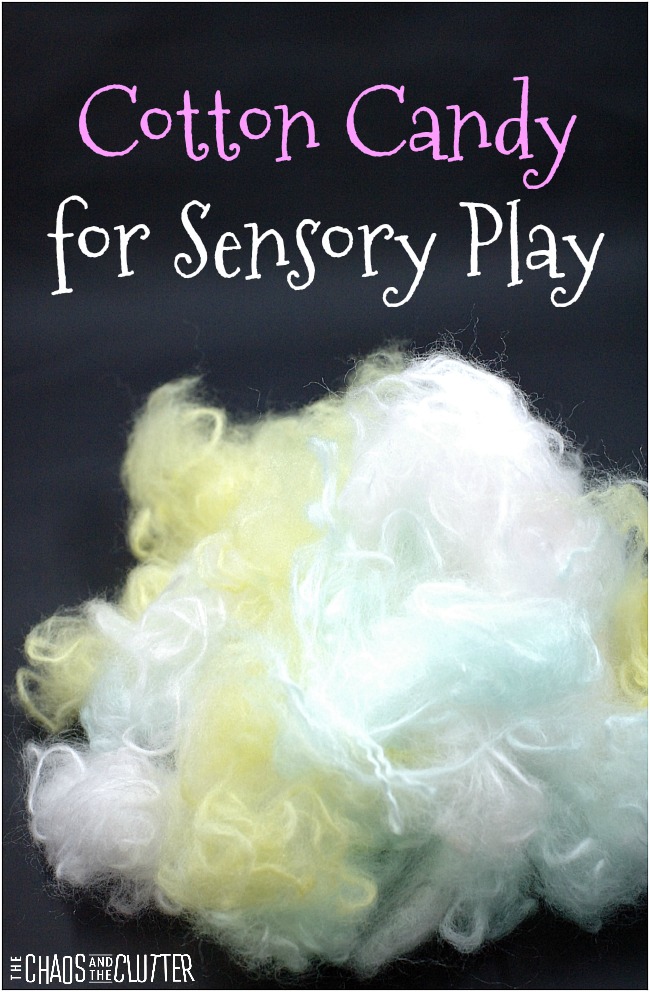 How to make fake cotton candy for sensory play:
How to make fake cotton candy for sensory play: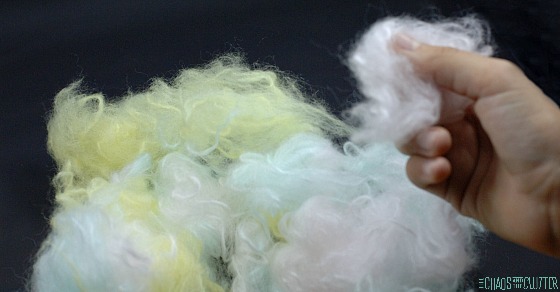 This sensory cotton candy would be so cute in a carnival or circus themed sensory bin!
This sensory cotton candy would be so cute in a carnival or circus themed sensory bin!
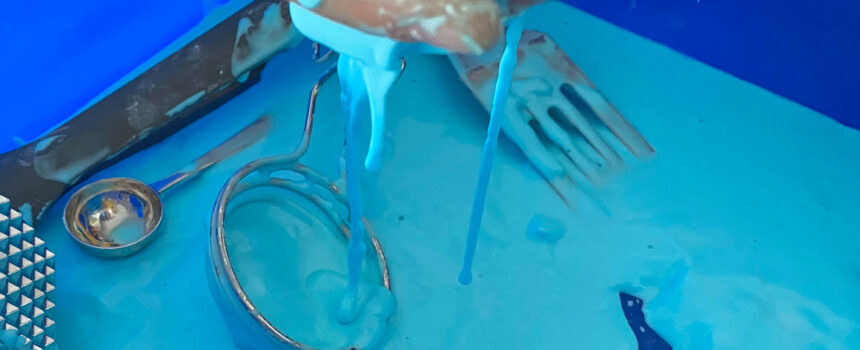
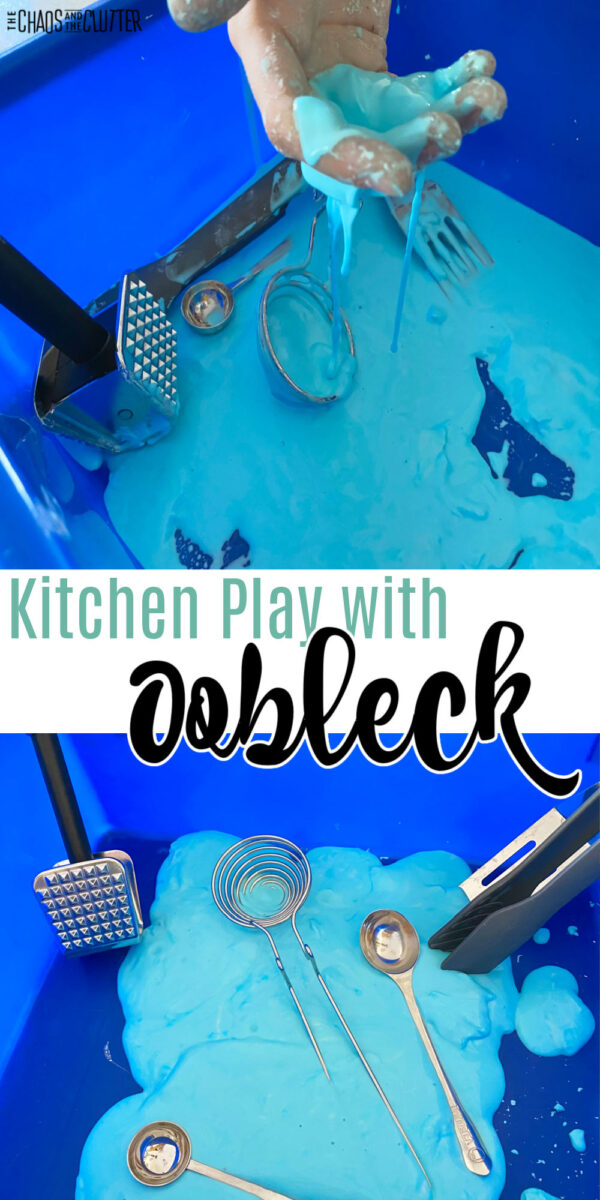 Of all the sensory play recipes, oobleck is the absolute easiest.
Of all the sensory play recipes, oobleck is the absolute easiest. 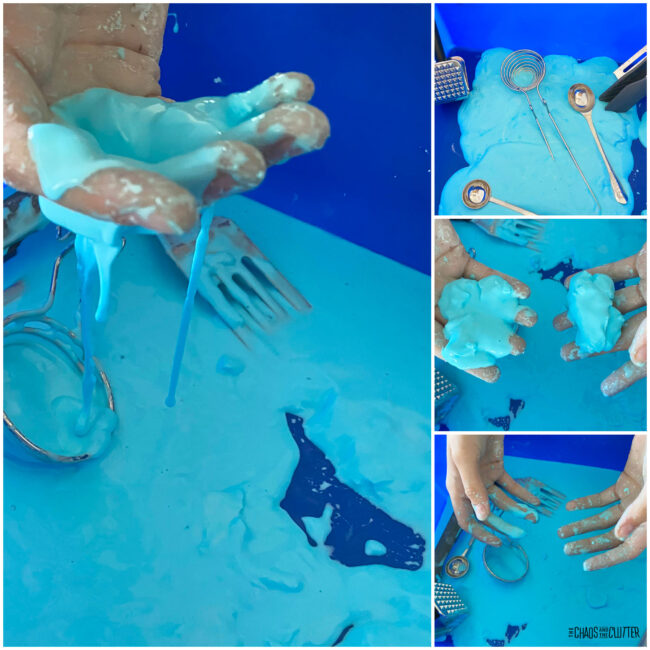
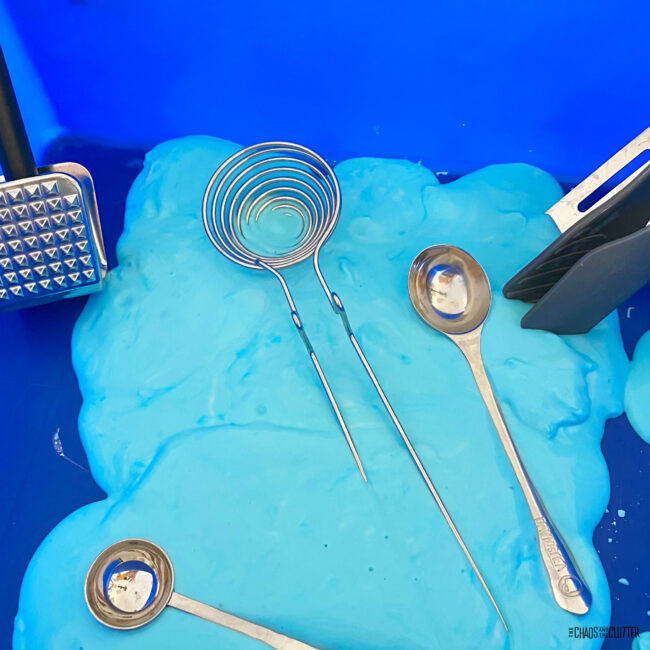
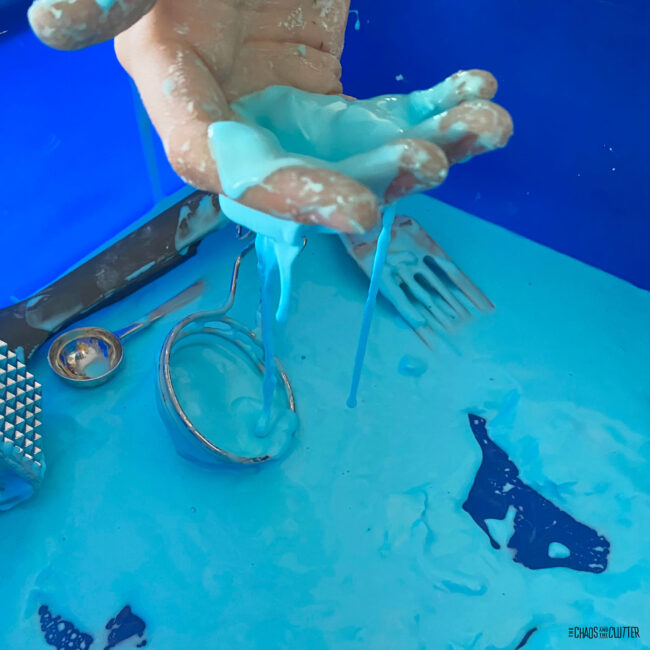
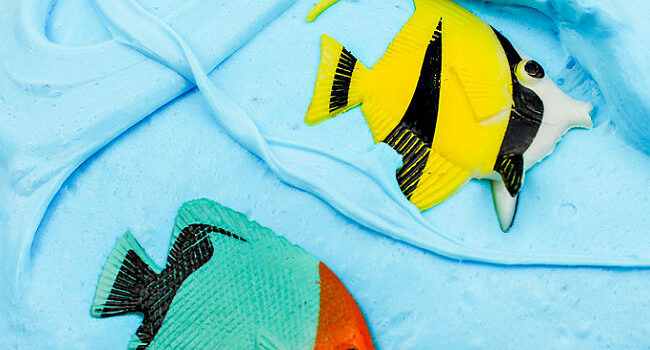
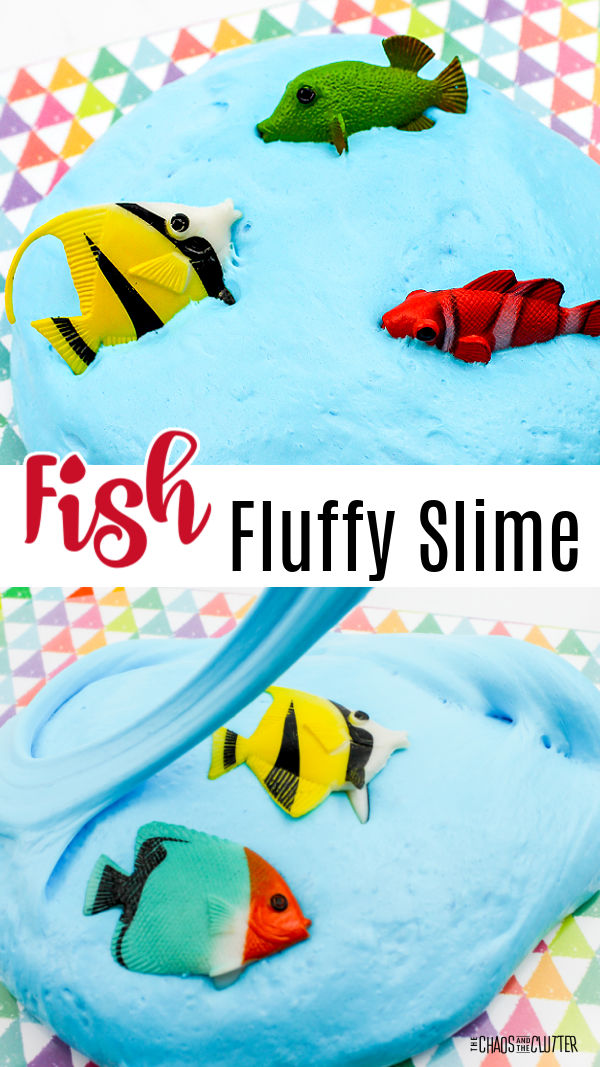 Slime is pretty popular in our house and fluffy slime is the favourite. Everyone loves the texture that the shaving cream gives to it. Plus, it’s got that really nice stretch to it.
Slime is pretty popular in our house and fluffy slime is the favourite. Everyone loves the texture that the shaving cream gives to it. Plus, it’s got that really nice stretch to it.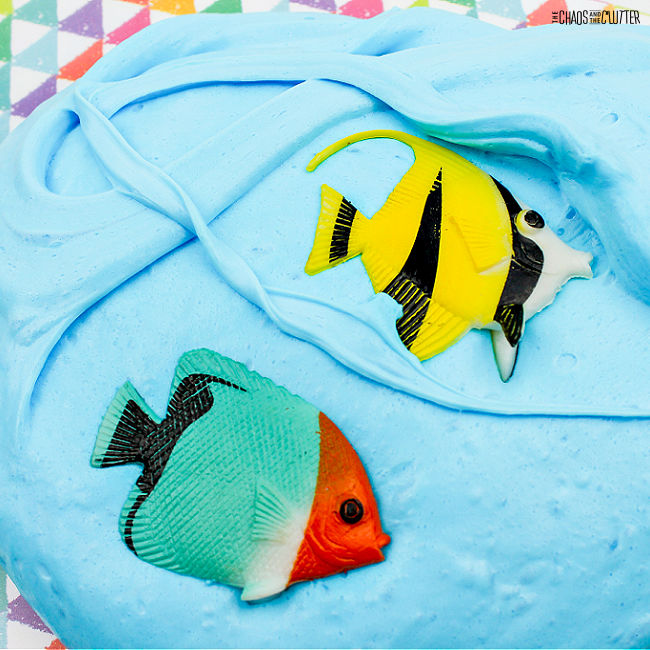 Directions:
Directions: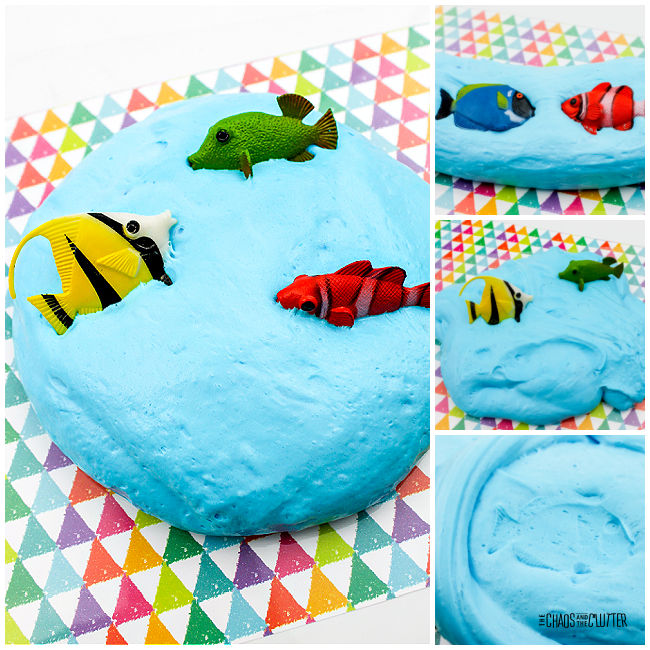 Adult supervision should be used with this and all other sensory play activities.
Adult supervision should be used with this and all other sensory play activities. 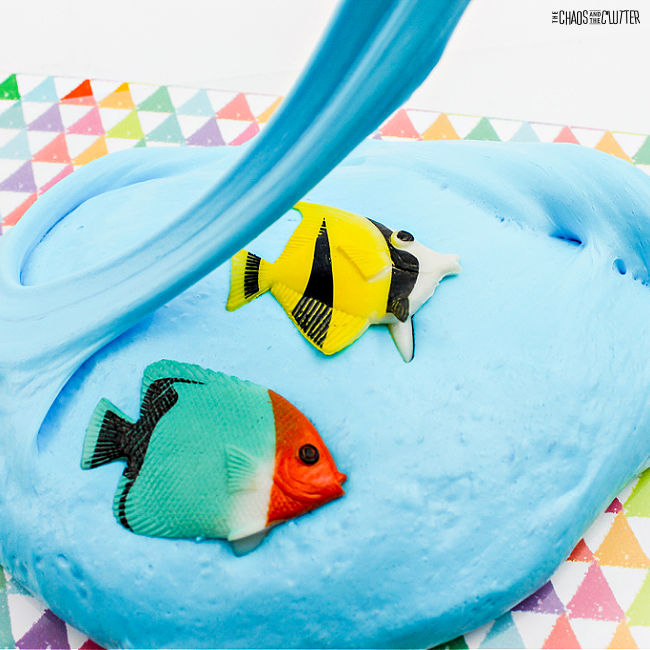 Be sure to check out some of our other fluffy slime recipes. These ones are our favourites:
Be sure to check out some of our other fluffy slime recipes. These ones are our favourites: